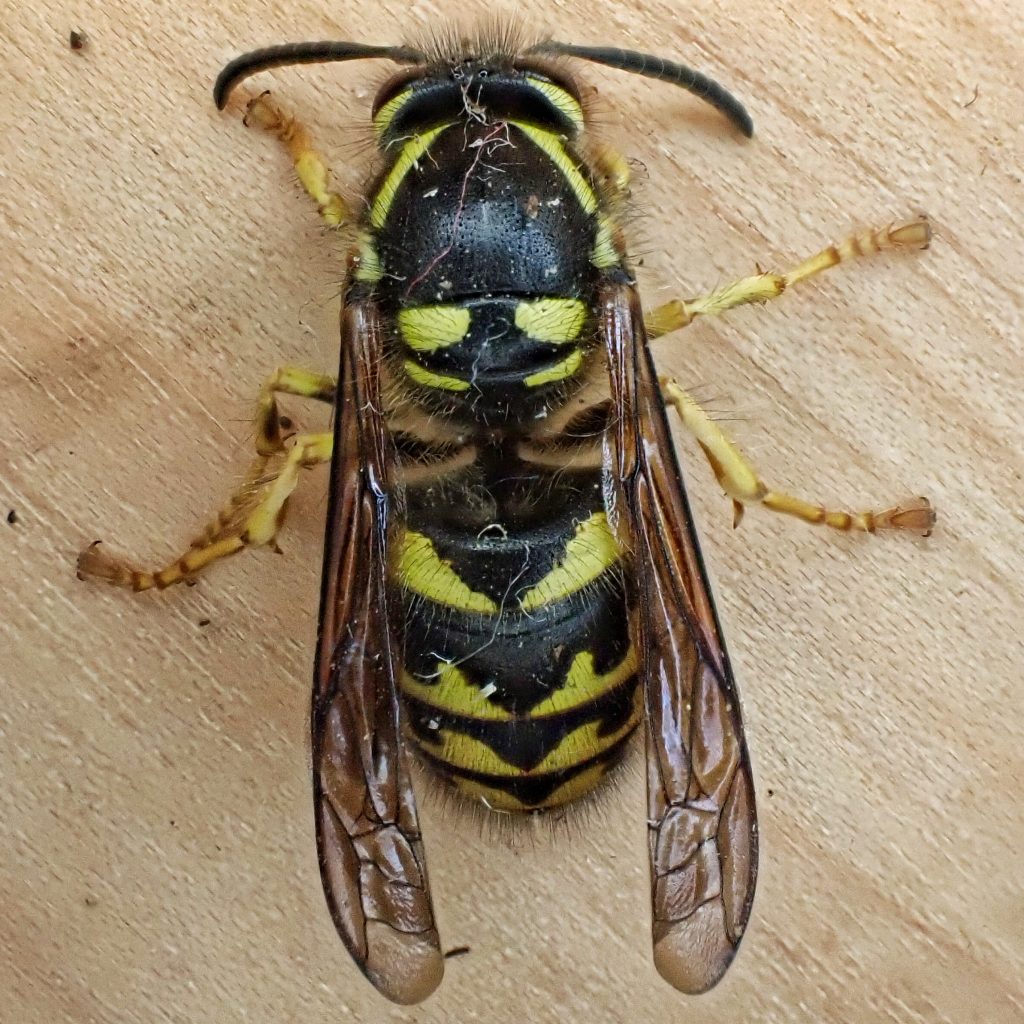
For anyone who wonders about my hiatus from writing profiles, I discuss it in the blog ‘Refocusing in Retirement’.
This social wasp in the family Vespidae also goes by the colloquial names common aerial yellowjacket, (though Dolichovespula arenaria is also known to sometimes build subterranean nests), sandhills hornet, and common yellow hornet, plus I’m sure it is called other, less printable names, although that is probably by people who mistake it for a more aggressive species of wasp. They are considered to be a ‘paper wasp’ because they masticate wood into a paper like substance and use it to build their nests.
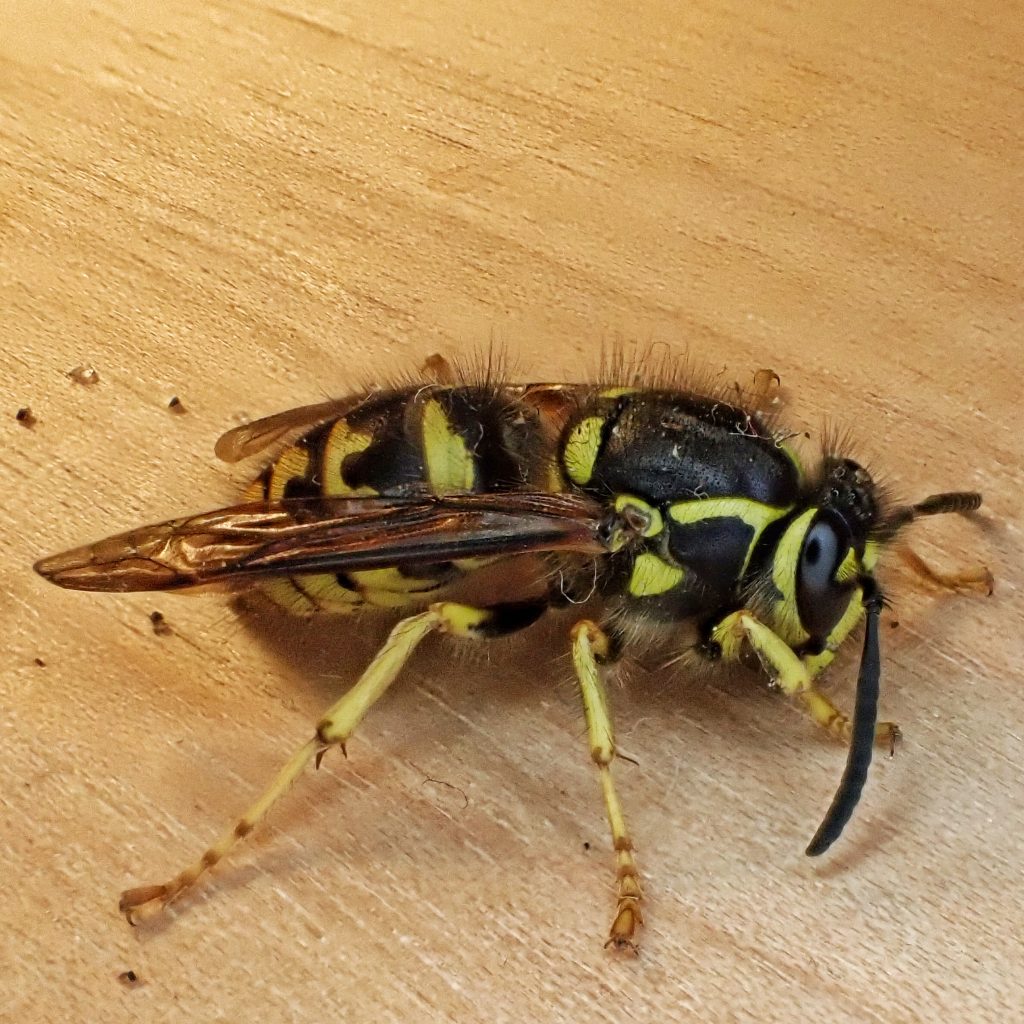
Queens control the caste of each egg by deciding whether or not to fertilize it from their stored sperm (unfertilized eggs produce males, which are genetically haploid), and whether or not to bathe fertilized eggs in ‘queen hormones’ (if not, the fertilized eggs produce genetically diploid female workers). Hymenoptera in general have only X chromosomes (unlike the XY combination that leads to males in most other life forms), so all fertilized eggs of wasps, bees, and ants are females.
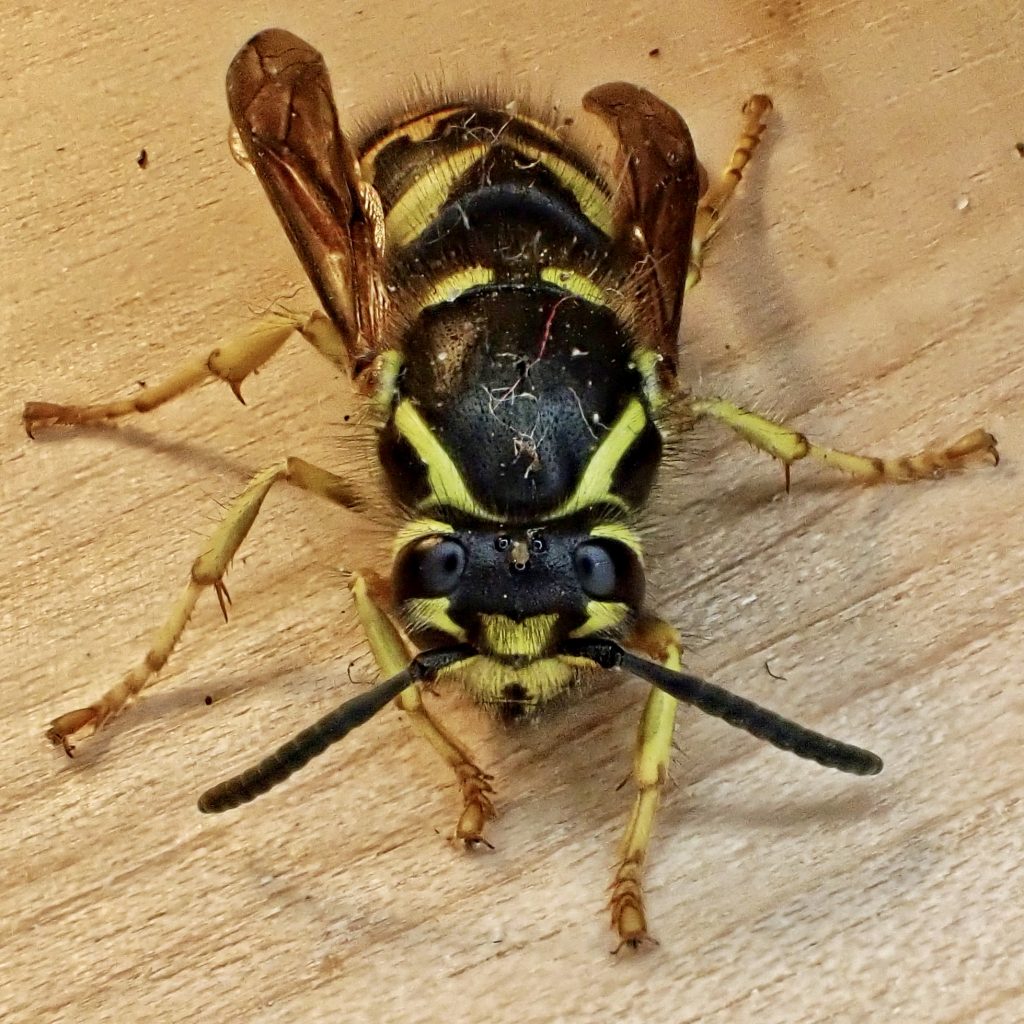
I found this gal on the upper Little White Salmon River, on the same ‘plan b’ excursion that produced the Infant Moth. Netting wasps isn’t necessarily difficult, but getting them into a container can be a little nerve wracking, although the only time I’ve been stung by a wasp in a net was because I didn’t realize it was in there, being bycatch of a successful swing at what I seem to remember was a Cercyonis sp. (wood nymph) butterfly, and I trapped the wasp against the net with the back of my hand. But I remember well the getting stung part, and it added significantly to my caution whenever I am making a transfer inside the net.
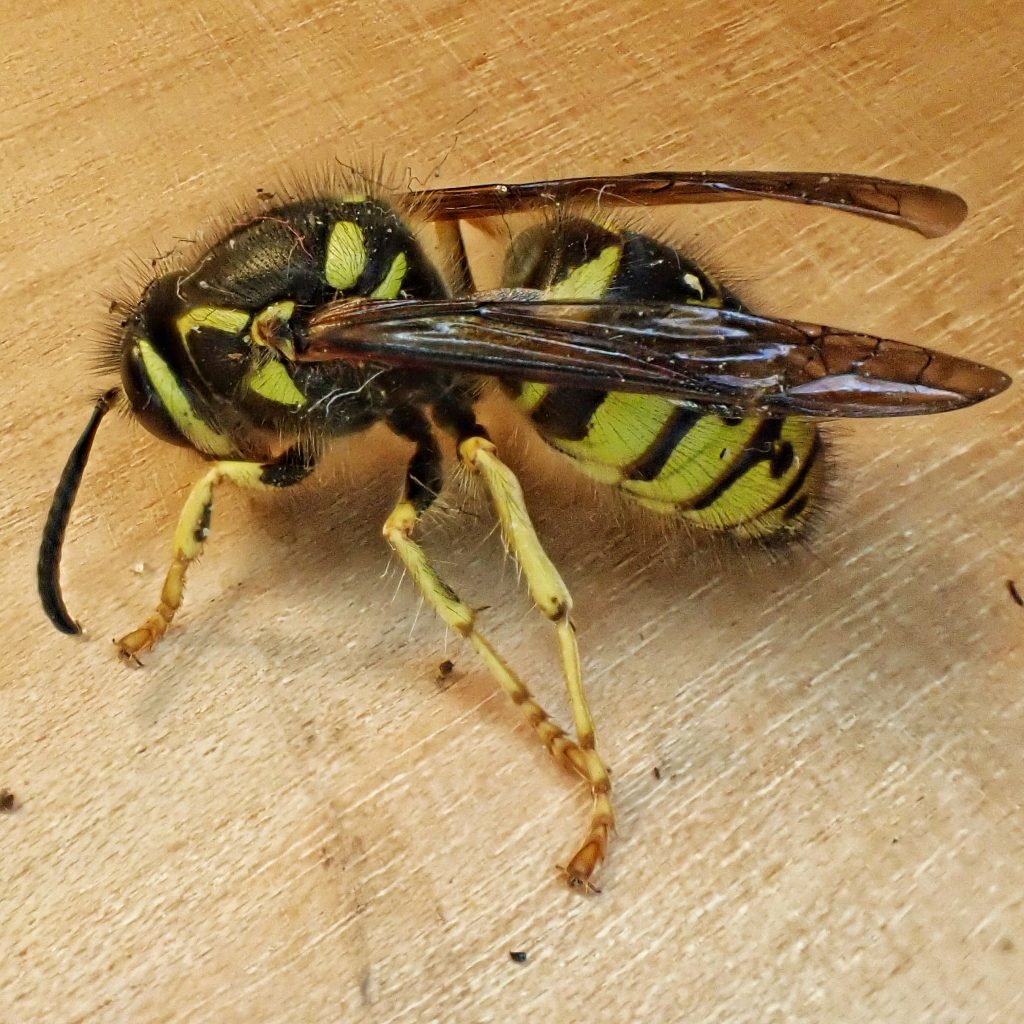
I thought this gal was probably a Dolichovespula as soon as I looked closely at the face and saw the long cheek, and for awhile I was hoping it was D. arctica, an obligate nest parasite (inquiline) that kills the queen of the host species and takes over her nest (thereby saving the interloper from a whole lotta work), and D. arctica is known to target D. arenaria. But closer examination at home after some refrigeration, and with the aid of Chris Alice Kratzer’s fantastic ‘Social Wasps of North America’, convinced me that it was Dolichovespula arenaria.
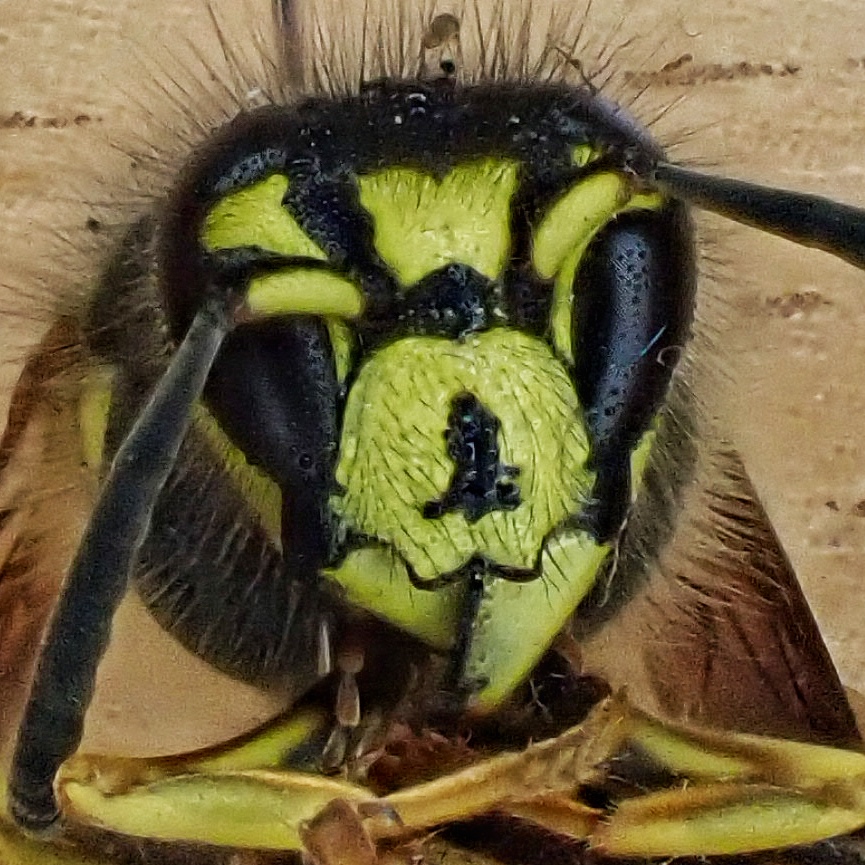
D. arenaria are very valuable pollinators, since they require massive amounts of nectar and other energy sources whilst tirelessly hunting insects (often pest species) for the colony’s larvae. They tend to be much less aggressive than Vespula spp., as well as not having the same preference for meat, so their interactions with humans do not, on average, tend to be painful ones. From a human centric point of view their biggest downside is that they also consume some beneficial arthropods, and they can introduce ‘fire blight’ into potato crops, both of which are far outweighed by their positive benefits.

Description-Medium sized (14-17mm) black and usually yellow wasp, with 2 checkmark shaped lateral stripes on the pronotum, wide yellow bands along the front and rear of the eye, and the cheek (oculo-malar space) is at least 1/5 as long as the eye; upper tergal stripes are not fused, and T1 has an obvious gap.
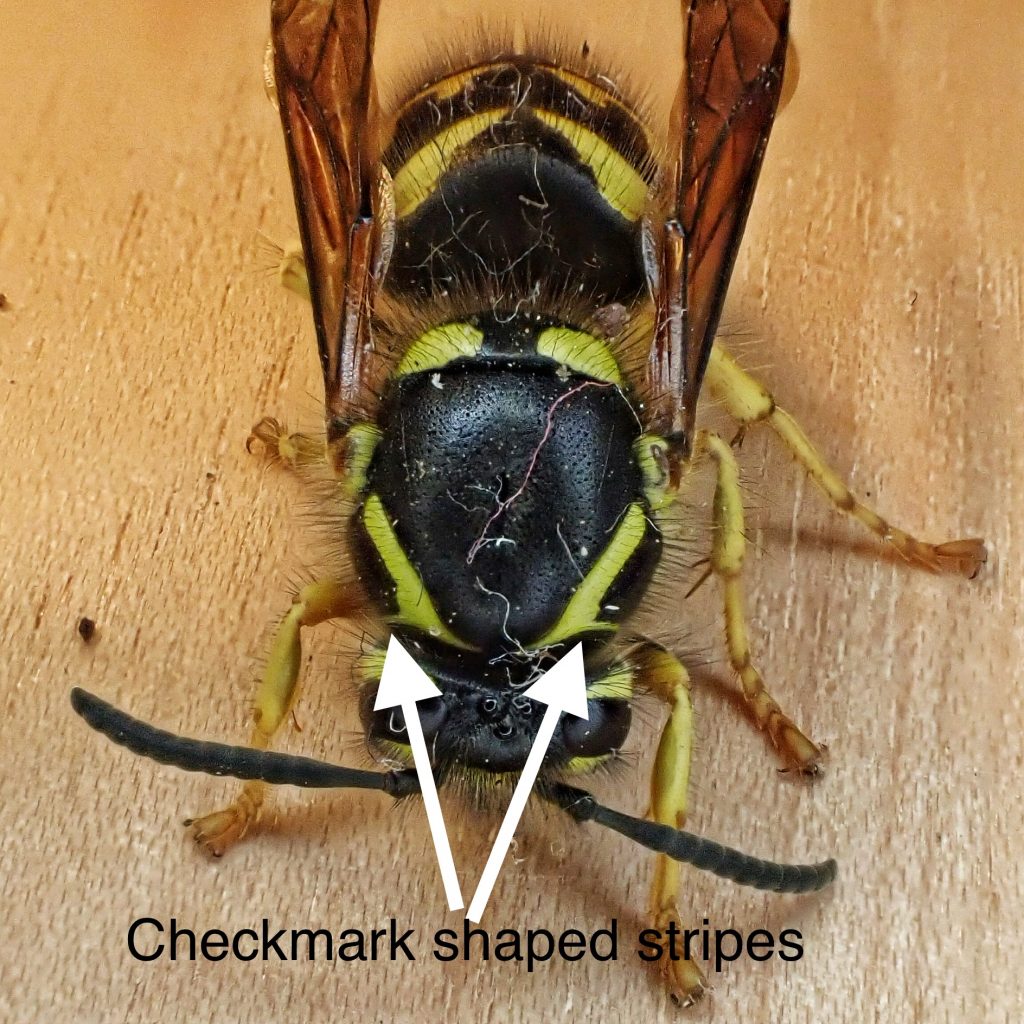
Similar species– Dolichovespula maculata is larger and whiter; D. arctica has much less yellow/white around the eye and nearly fused T1 stripe; D. albidum, D. alpicola lack ‘checkmark’ on pronotum, have tergal stripes fused, or nearly so; Vespula spp. have very short cheek, and lack ‘checkmarks’ on pronotum.
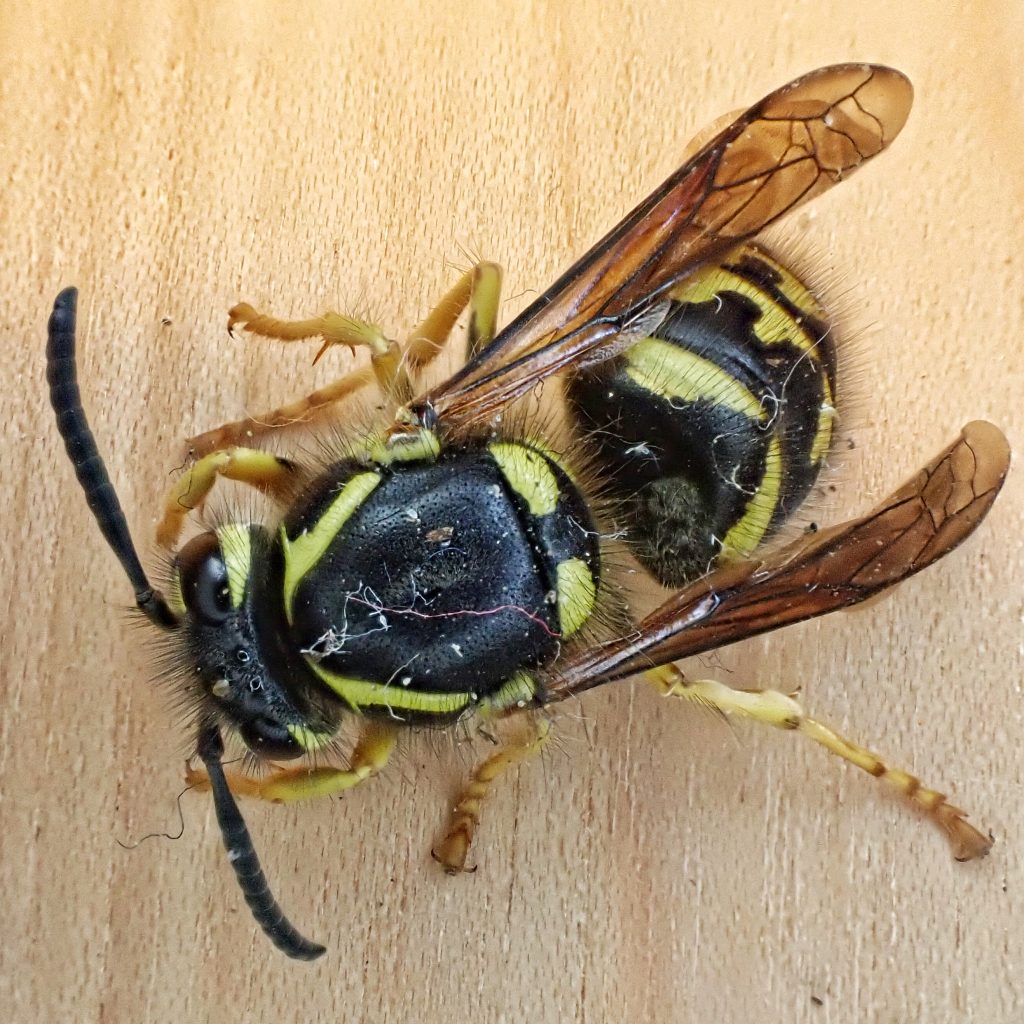
Habitat-Tend to be most common in forested areas and woodlands, as well as being found around human made structures.
Range-Northern North America; region wide in the PNW.
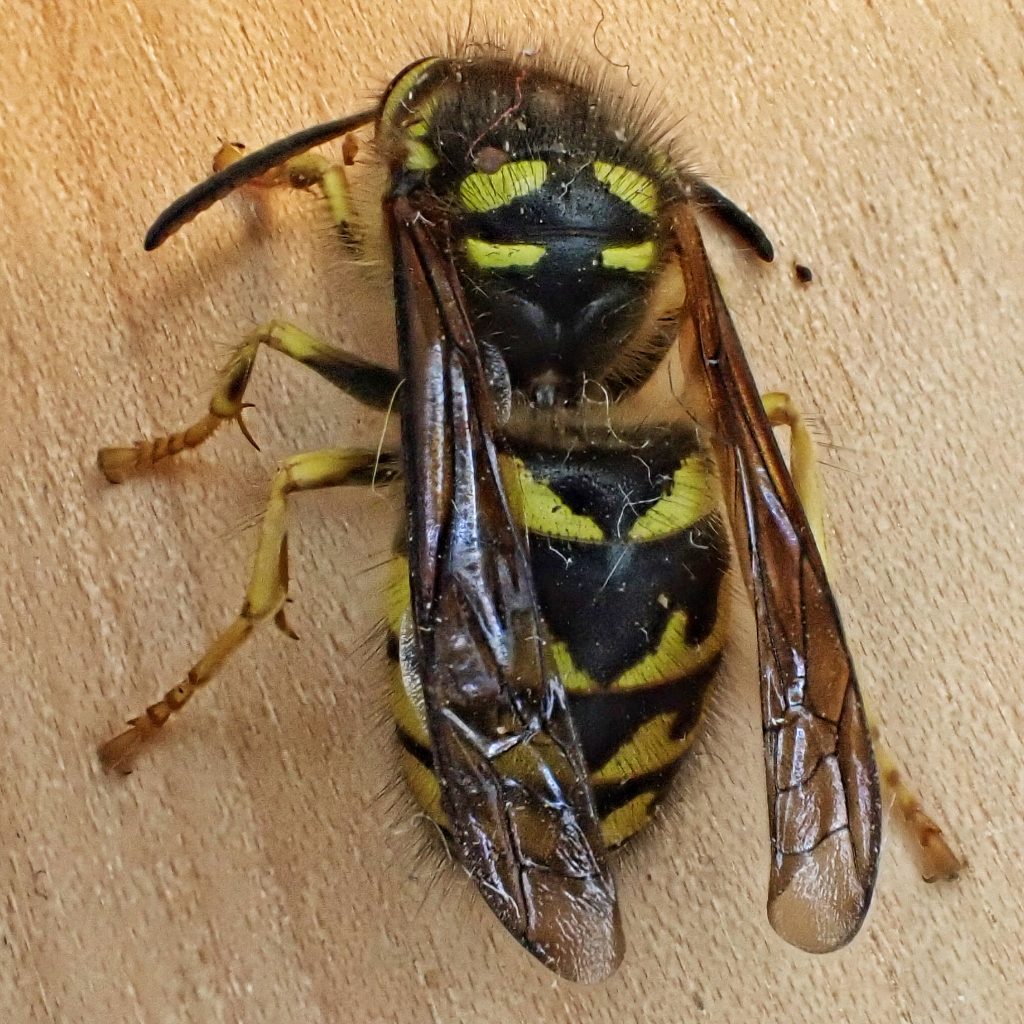
Eats-Larvae eat masticated insects (including lady beetles, which are avoided by most wasps) supplied by the workers of the colony; queen larvae are often fed ‘leftover’ worker larvae when food becomes scarcer near the end of the season; not as prone to visit carrion (or barbecues) as many of the Vespula; adults consume nectar and fruit juices.
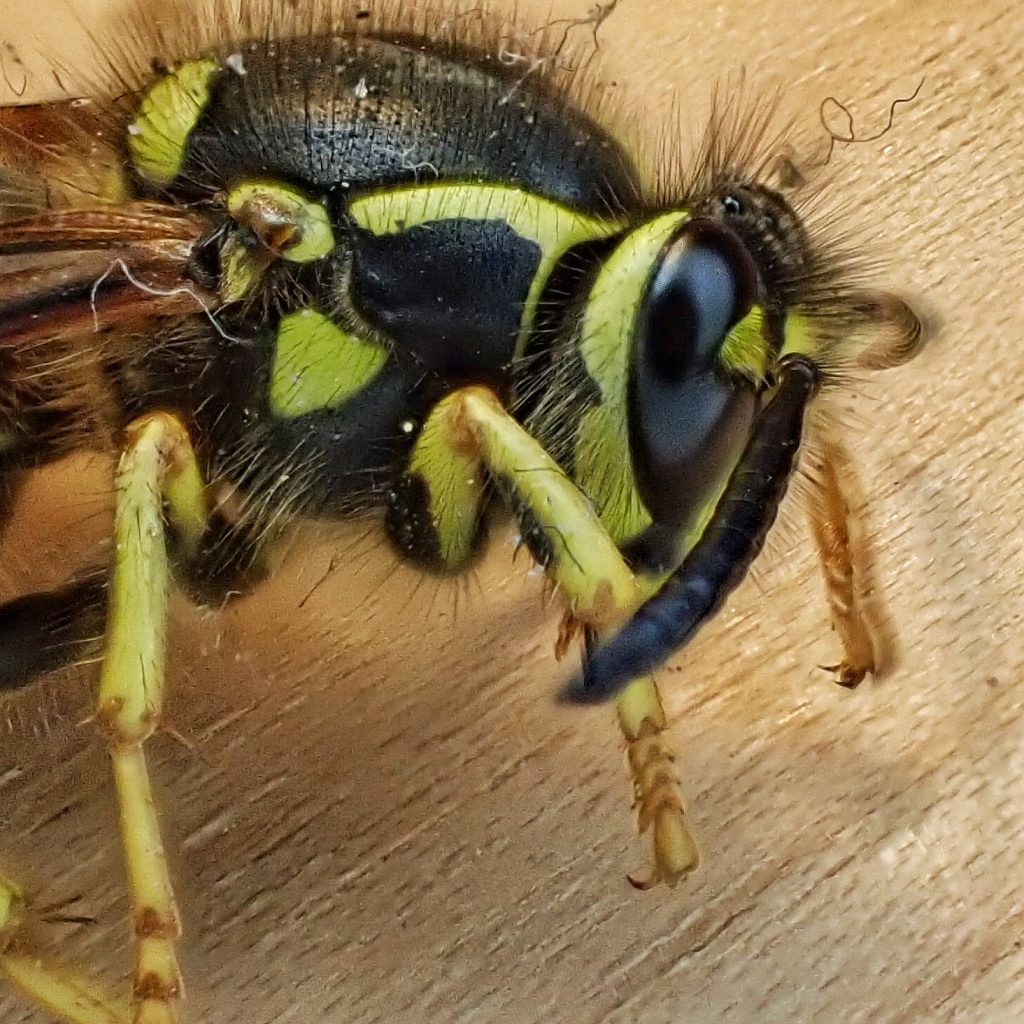
Eaten by-Some mammals (bears, skunks, opossum, raccoons) will attack nests during cold weather and at night when the adults are sluggish, to feed on the high protein larvae; robber flies, mantids, spiders, lizards, and insectivorous birds will prey on adults.
Adults active-March to October
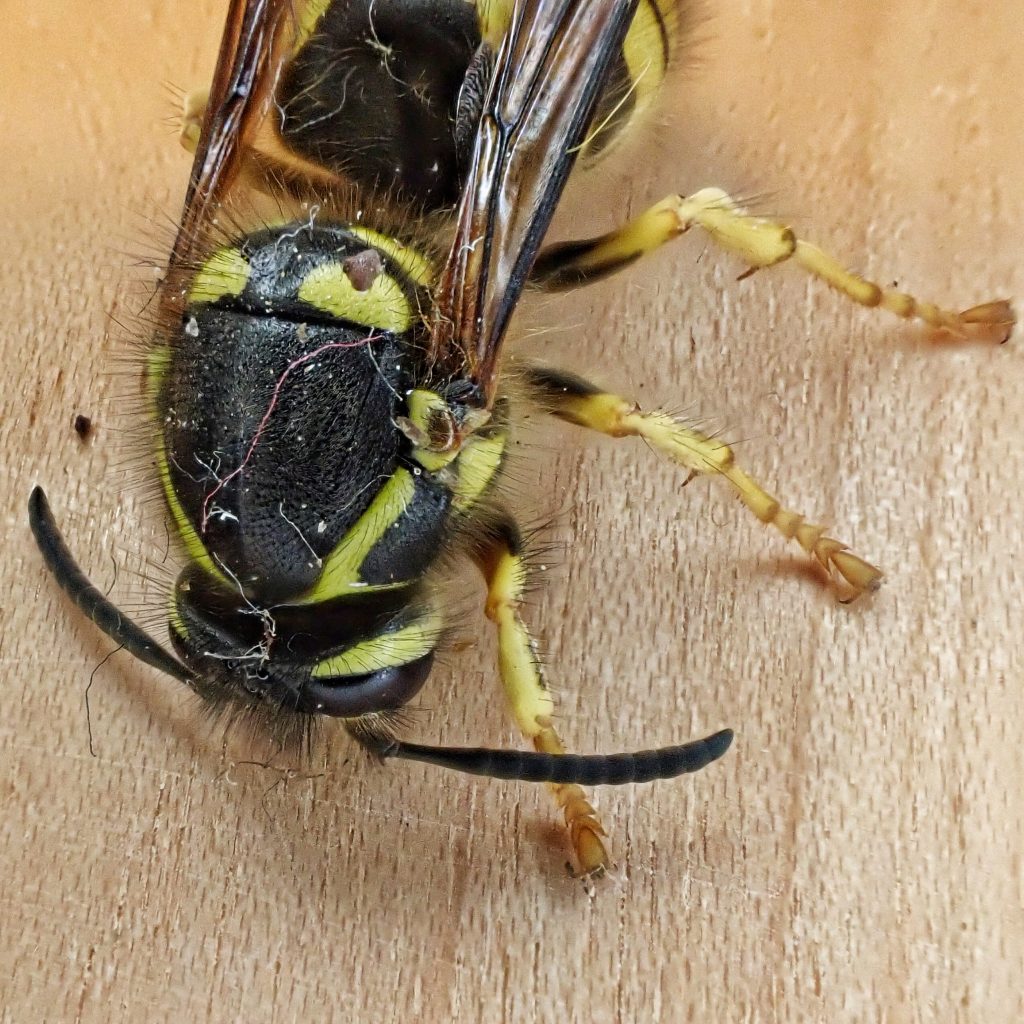
Life cycle-Queens are inseminated in the fall, and overwinter in diapause, emerging in spring to build a nest and lay eggs; workers are the main caste produced for the first few months, with males and queens only produced at the end of the season; colonies in our region only last a single year.
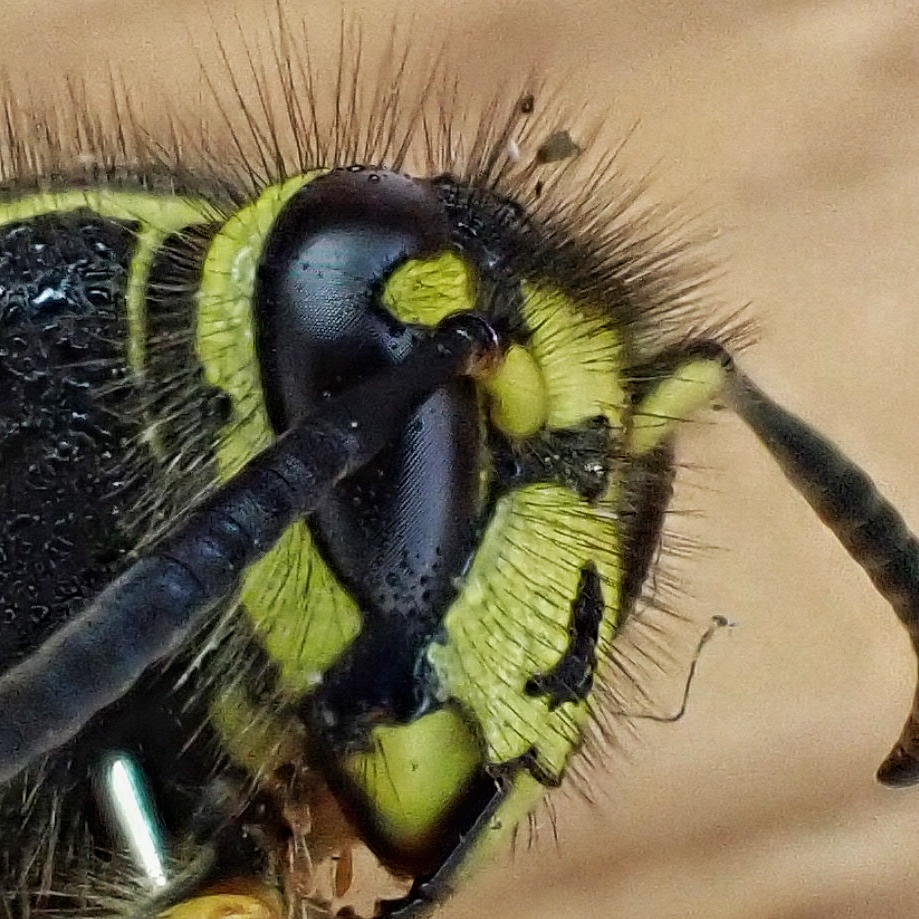
Etymology of names–Dolichovespula is from the Latin words for long-little-hornet, with the long referring to the long cheek, and the little referencing the fact that they are, on average, smaller than the ‘true hornets’ in the genus Vespa. The specific epithet arenaria is from the Latin for ‘sandy/arena’, and may refer to the habitat where the type species was found, although this is unclear from the original description.
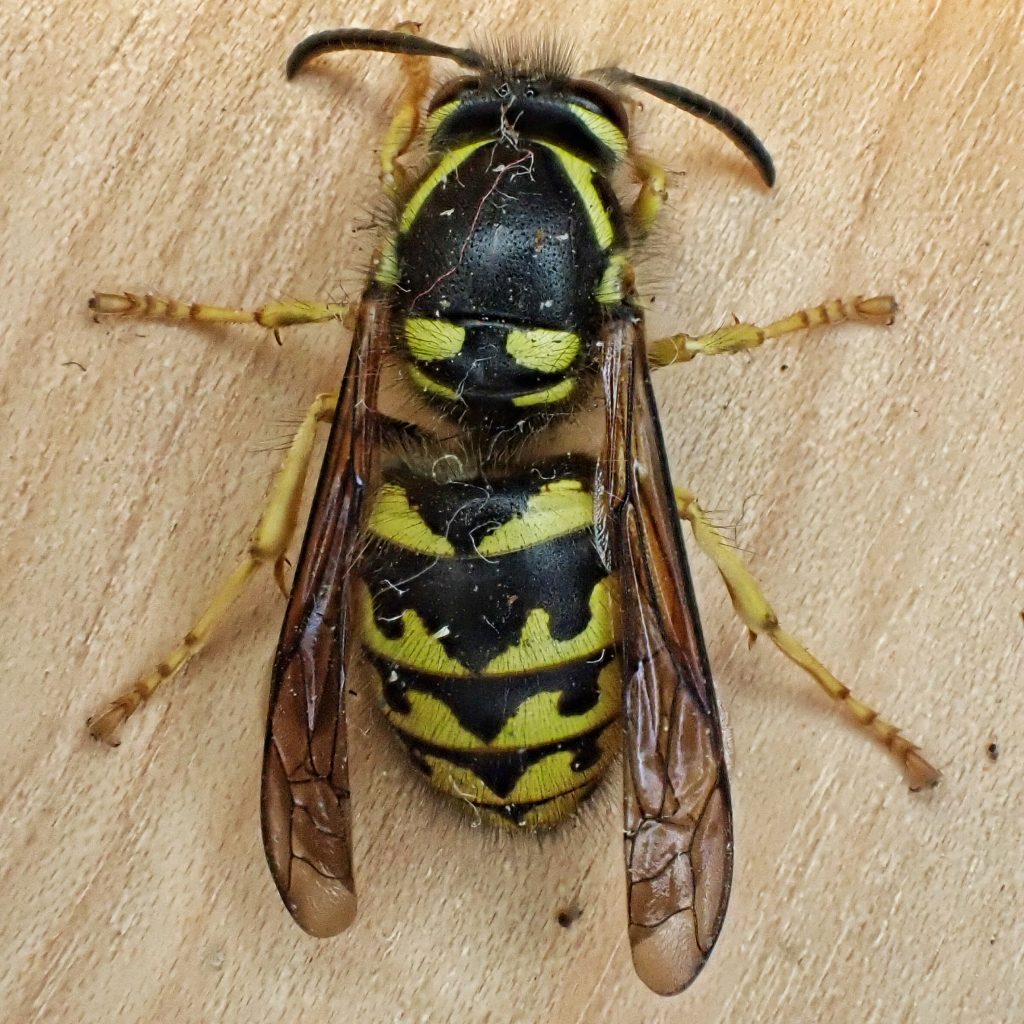
https://animaldiversity.org/accounts/Dolichovespula_arenaria/
https://bugguide.net/node/view/12983
http://biologicalsurvey.ca/ejournal/bmc_05/83d_arenaria.html
https://en.m.wikipedia.org/wiki/Dolichovespula_arenaria
https://www.owlflyllc.com/product-page/the-social-wasps-of-north-america
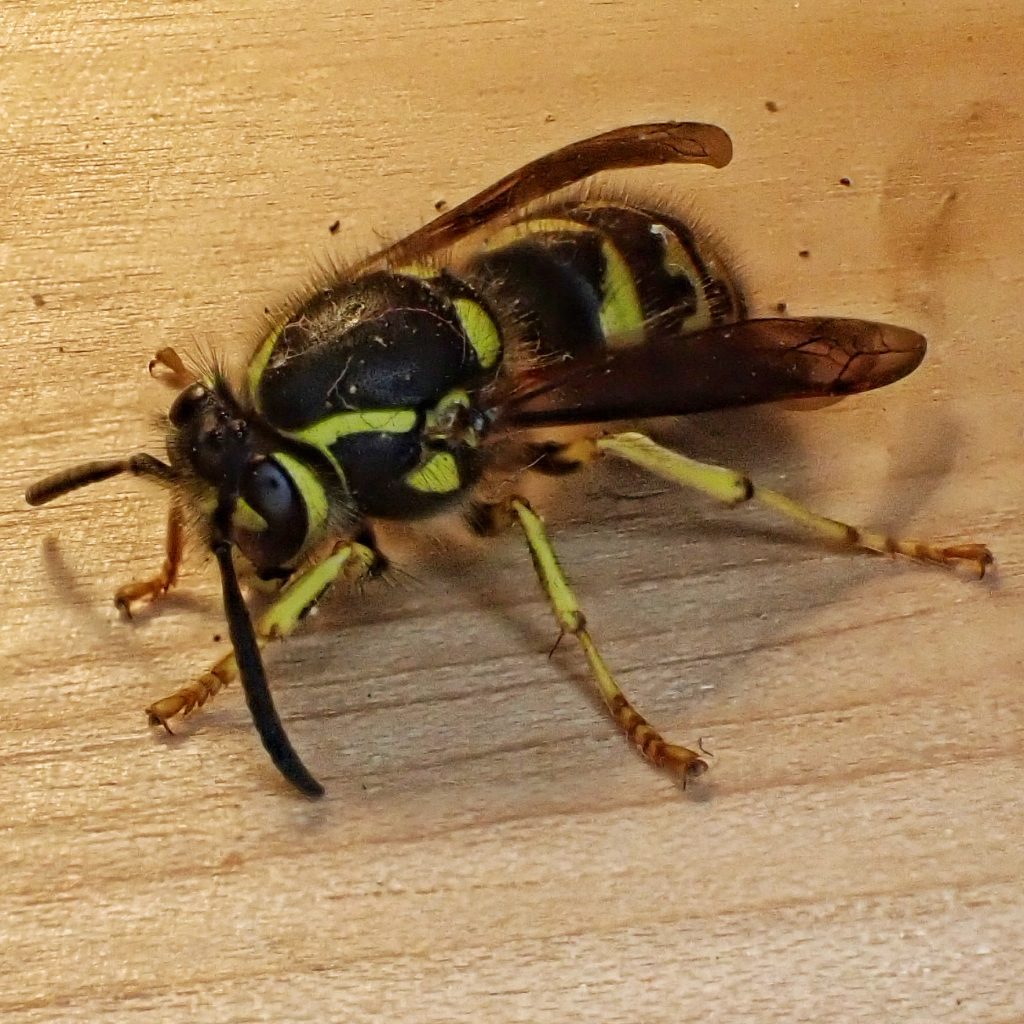
I unfortunately am highly allergic to them…. Found out the hard way…. I live on two wooded acres in the gorge and we seem to have an abundance of them during the summer… is there anyway to discourage them from taking up residence without completely destroying them.? Thank you
I’m sorry to hear that, Rhonda! I really don’t know of any way to discourage them without destroying them.
I use a bleach and water mix in a sprayer bottle to deter…..two days they’ll be gone but not necessarily dead. Remove any nests….
They really do understand not being in / on their own turf.
Are you talking about this species, or yellowjackets and hornets in general? I assume you are speaking to Rhonda’s concerns. I’m not sure that bleach water wouldn’t kill or seriously injure any wasp that came in contact with it.
Thank you for your wonderfully thorough article! Best I found today on my new resident. Initially I thought I had a German Yellow Jacket, but the aerial bulbous nest and markings put me at ease. After burning a couple of leaves, I cleared out the shed they inhabited and sealed it up, so they won’t be disturbed. I can’t wait for a fly free summer:)
Thank you for your appreciation! Glad to hear it was useful. Also really glad to hear someone talk happily about their beneficialness (if that’s even a word😀)